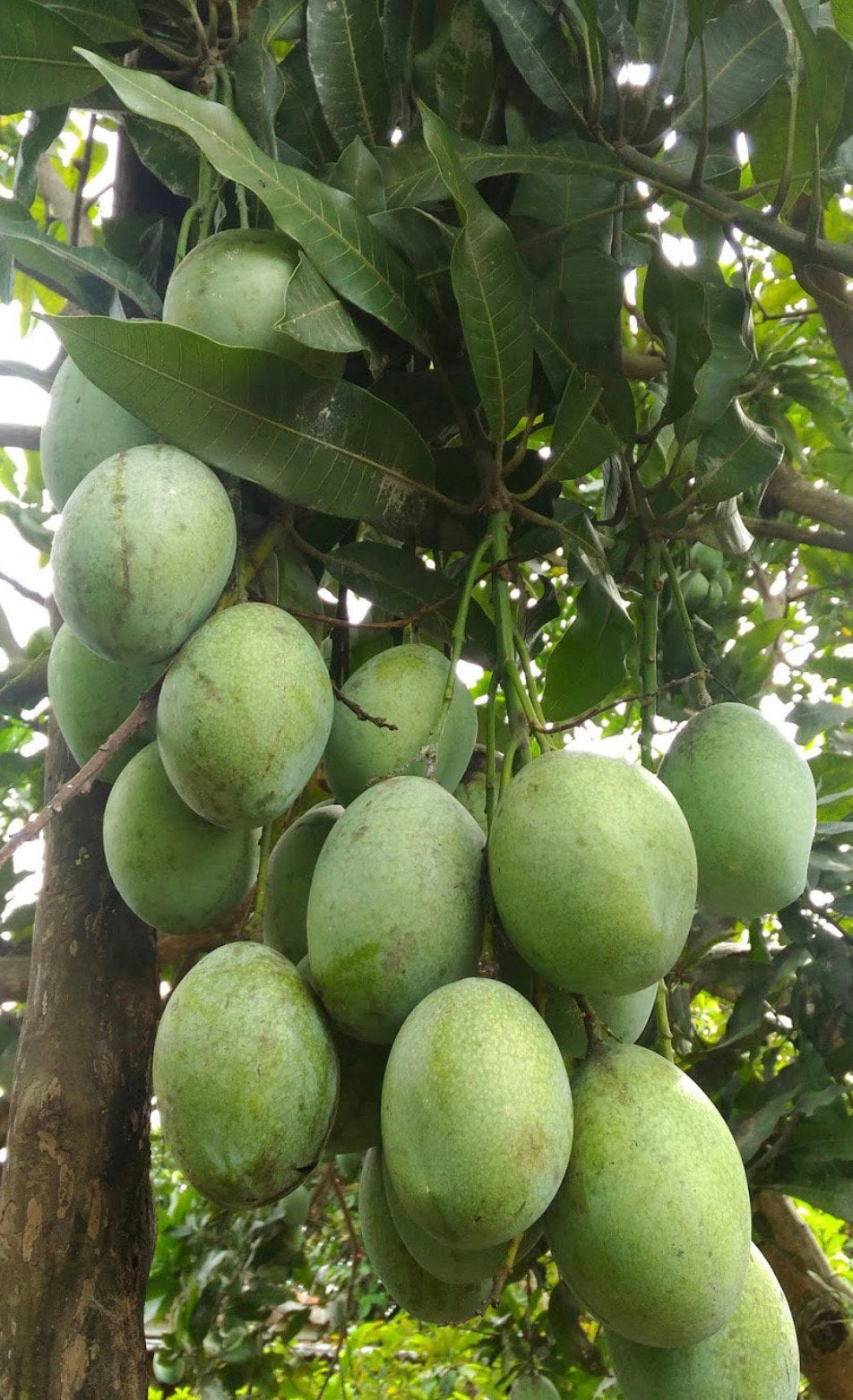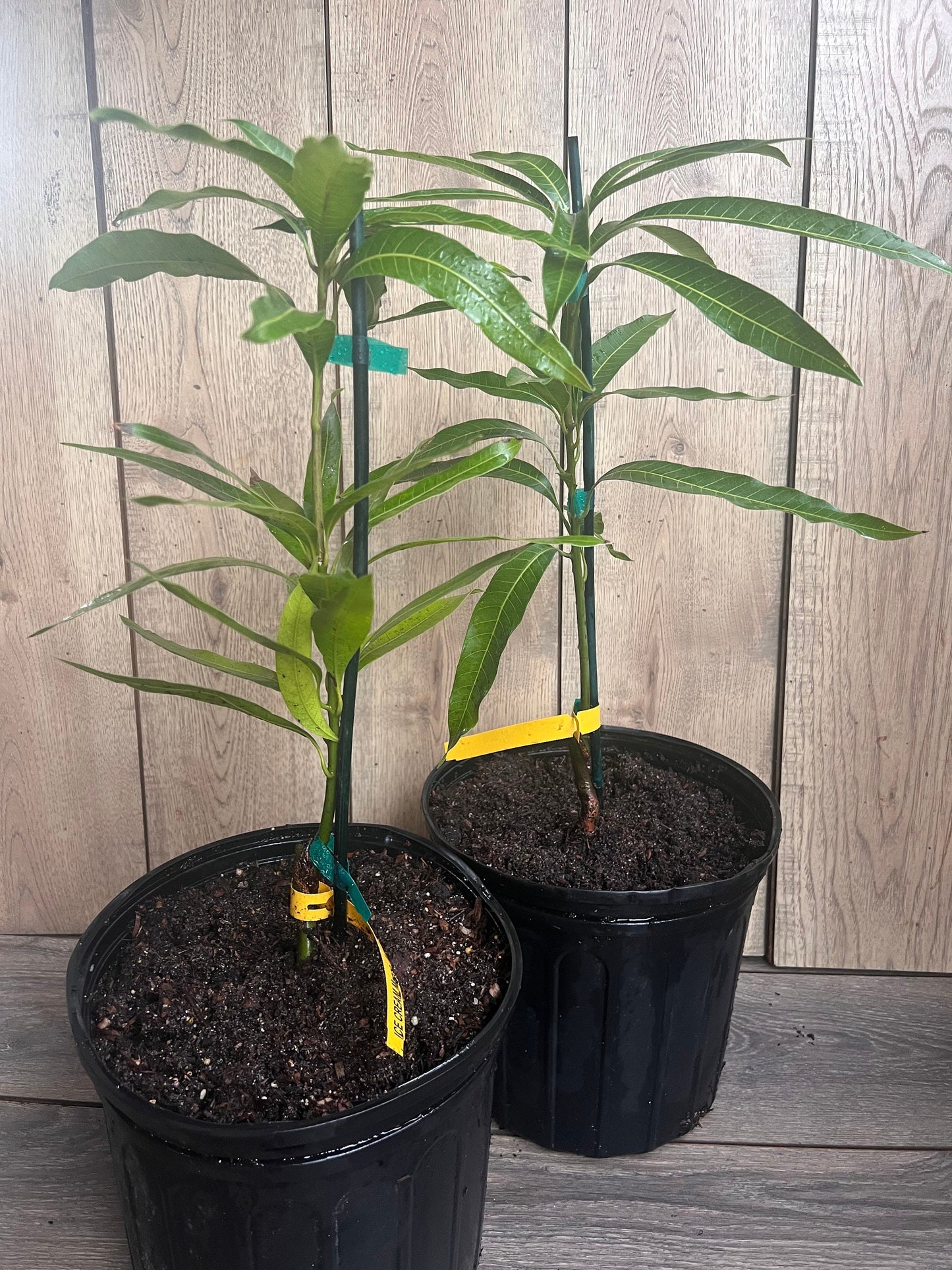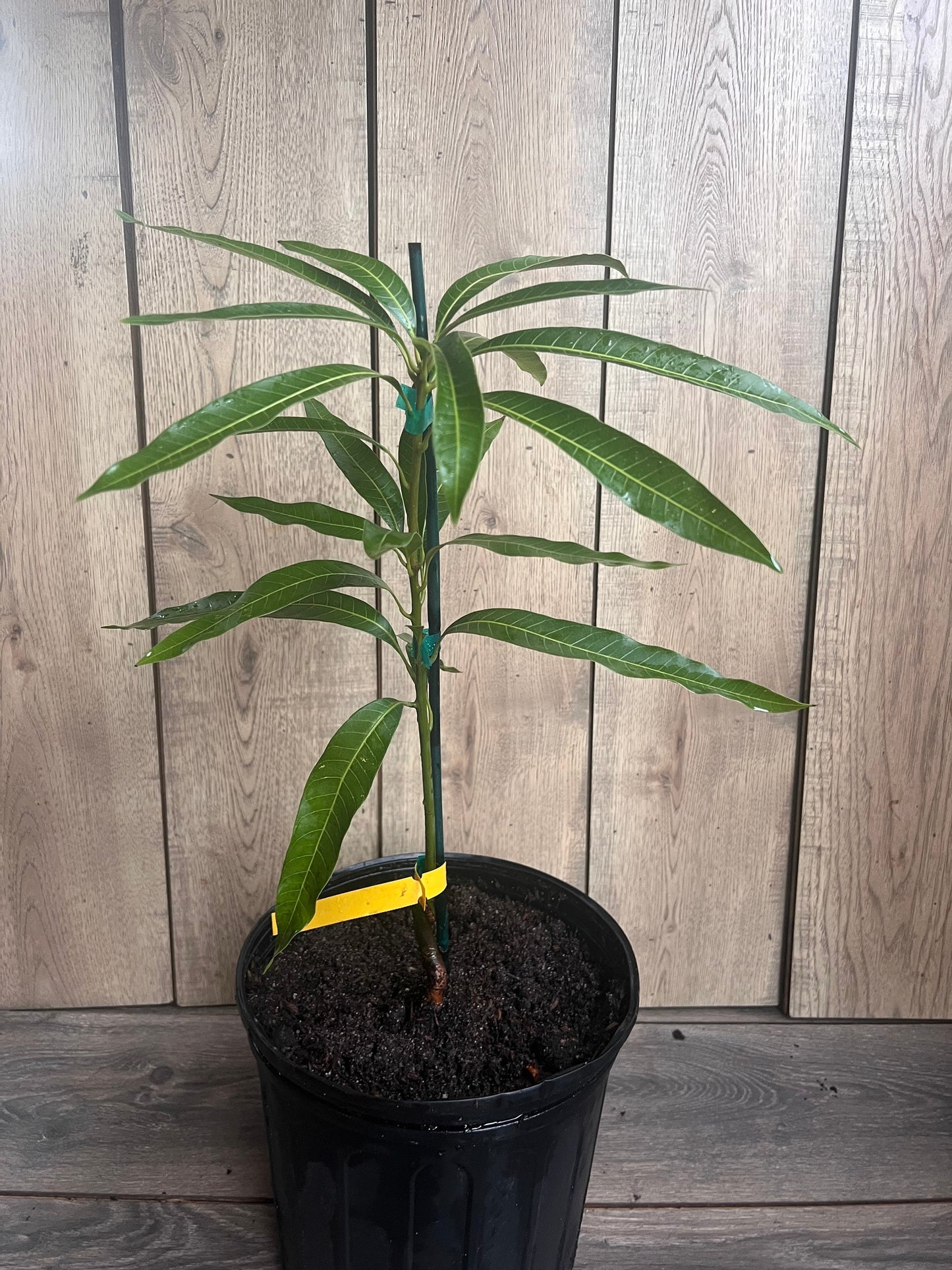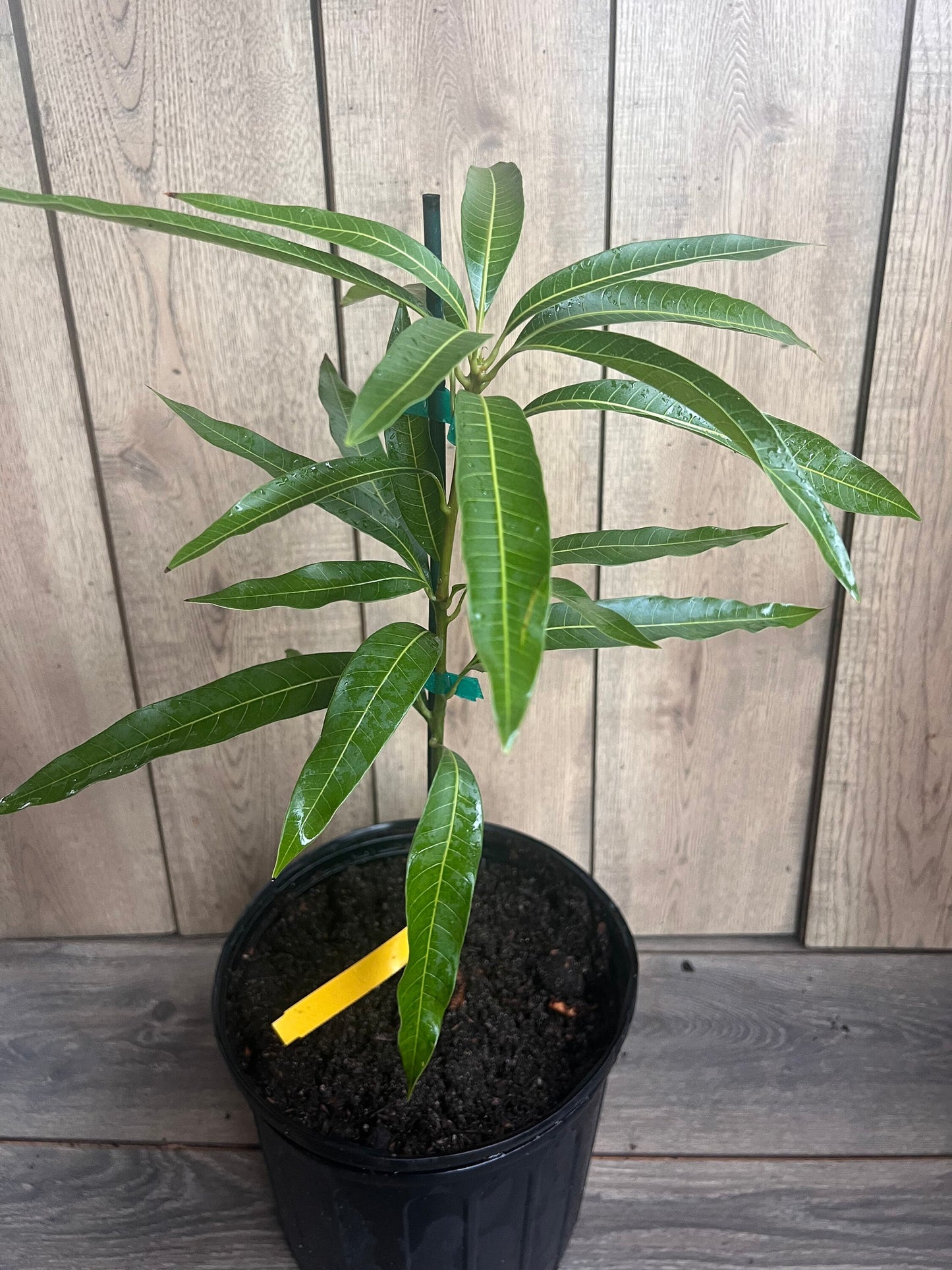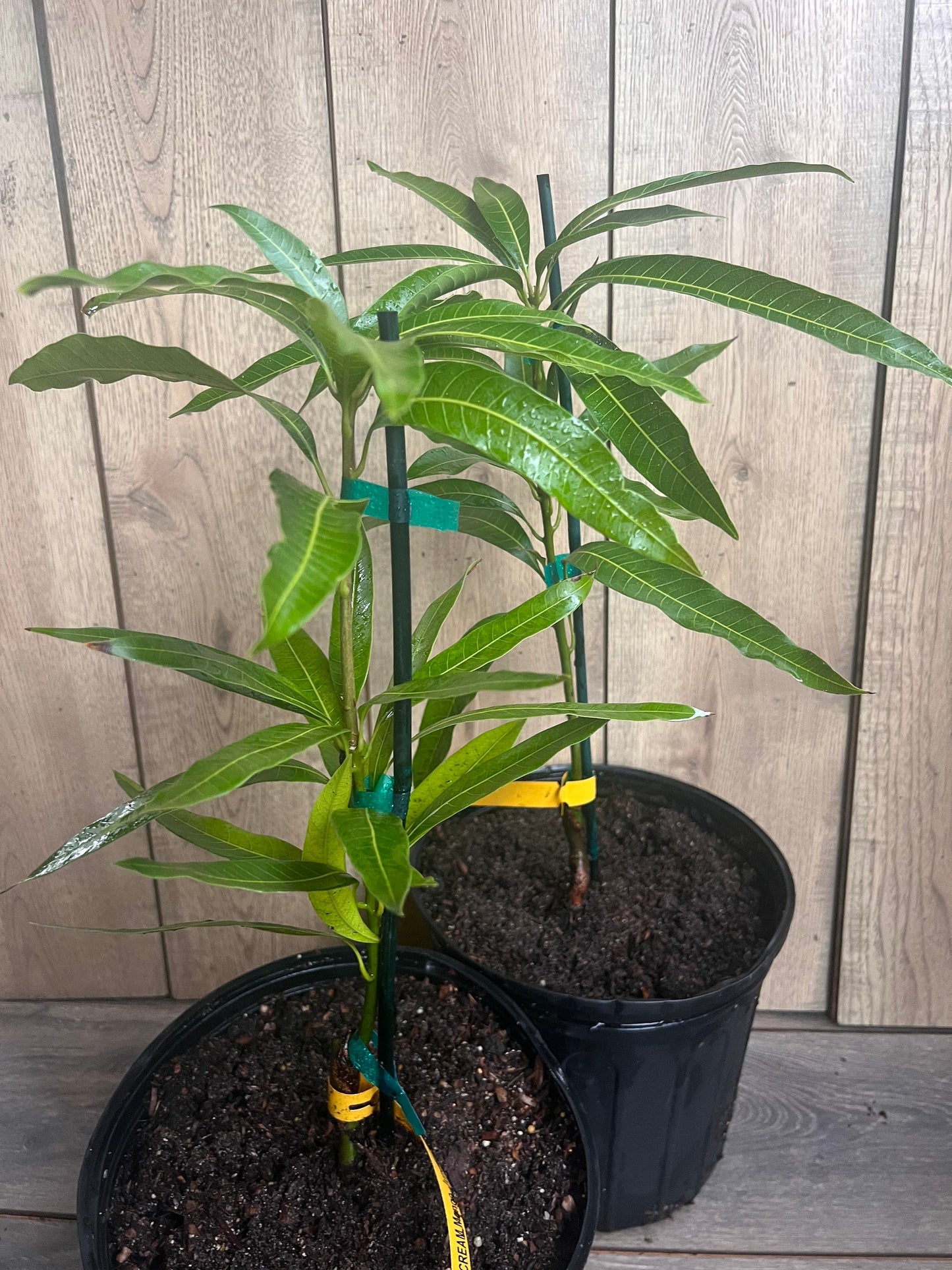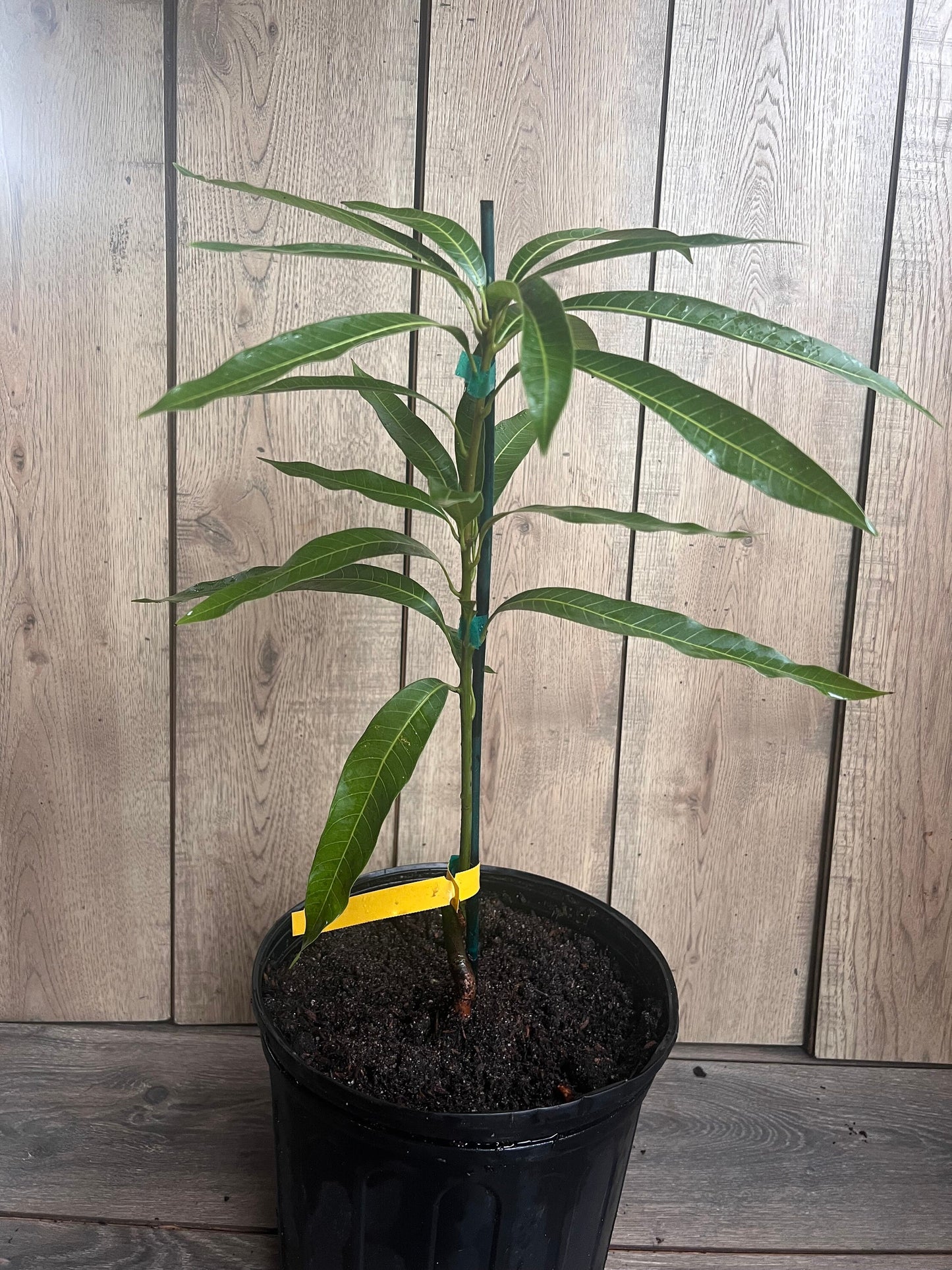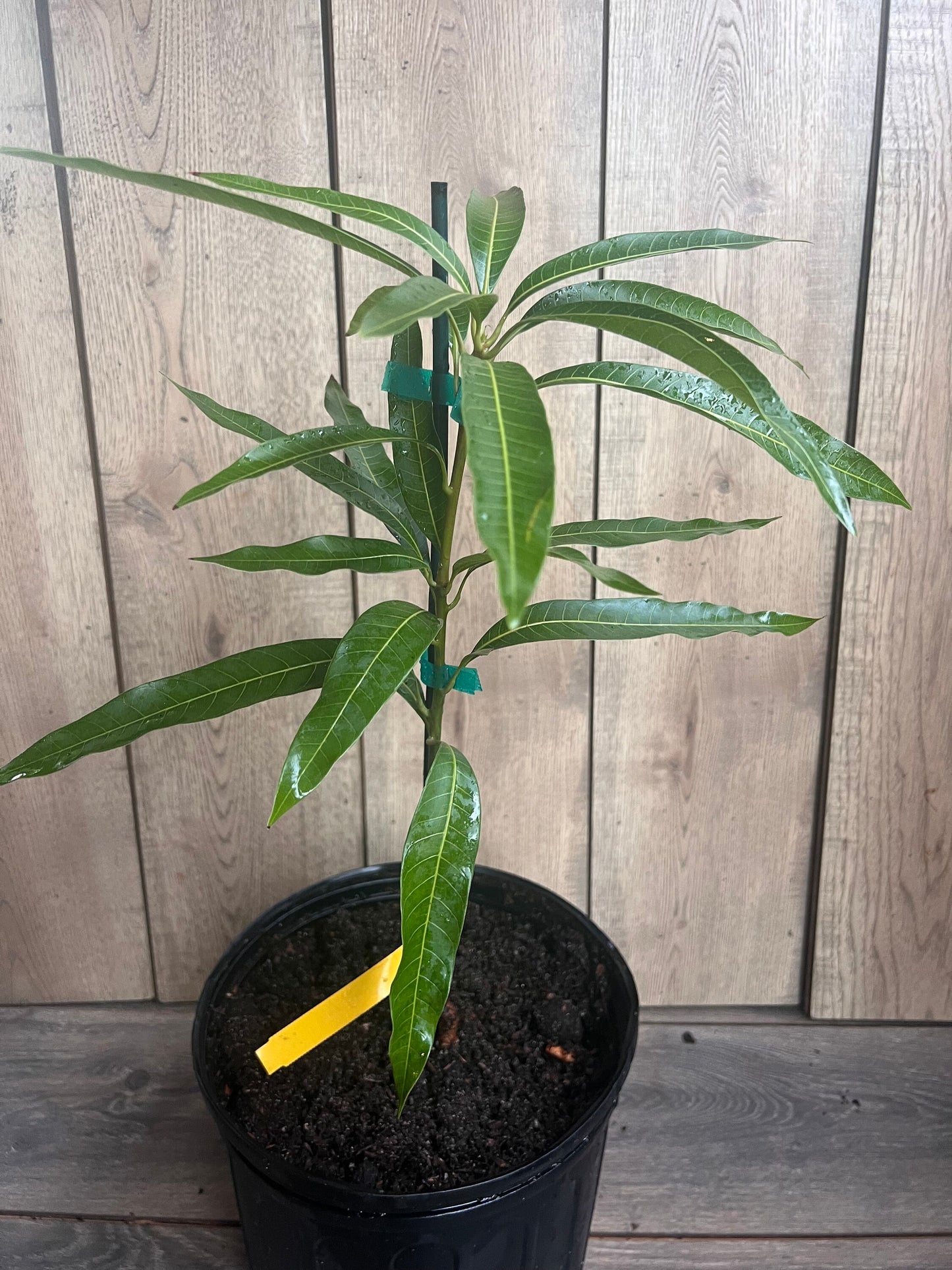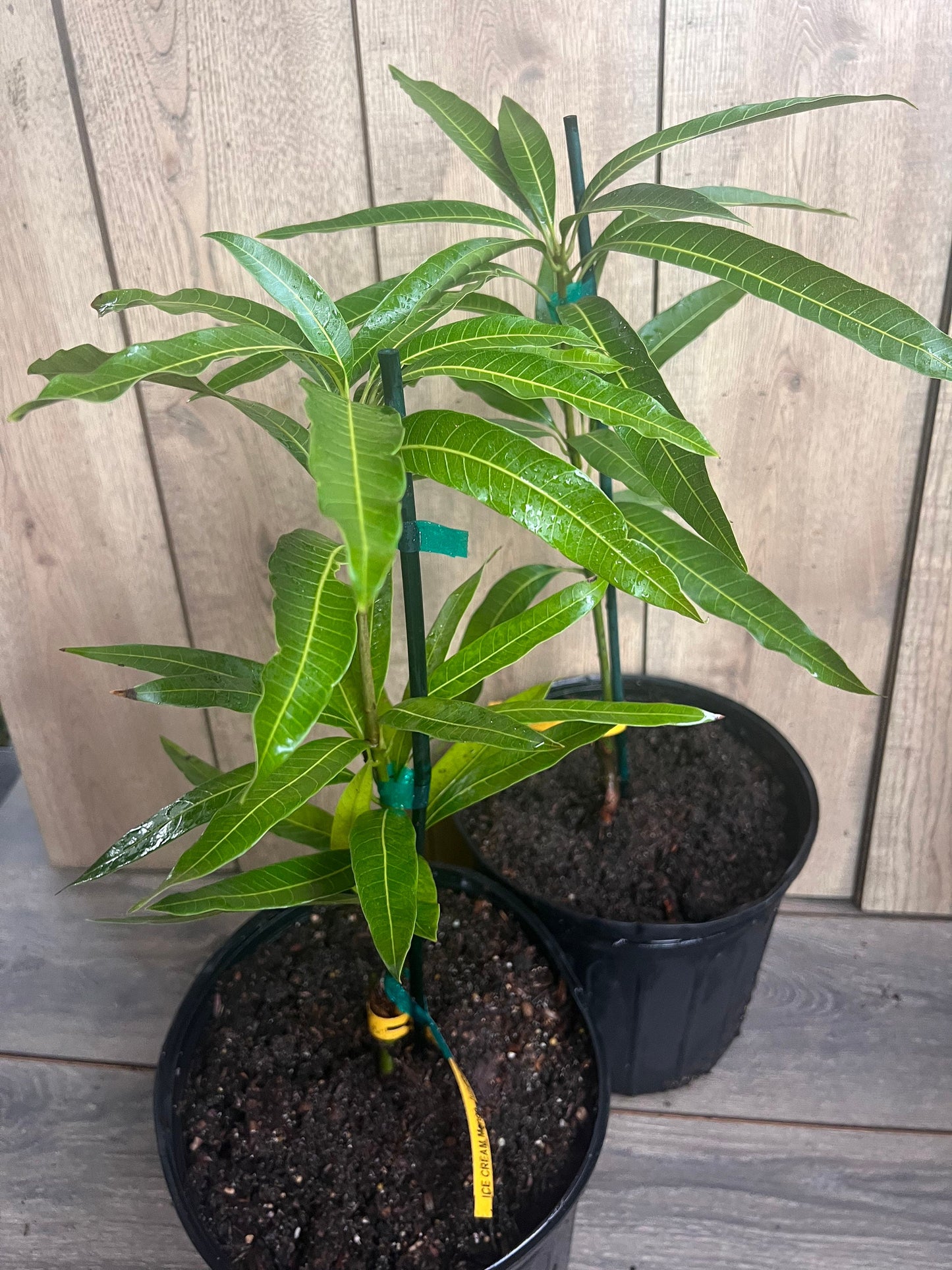Ice Cream Mango Tree. grafted in 3 gallons pot, No Ship to CA and HI
Ice Cream Mango Tree. grafted in 3 gallons pot, No Ship to CA and HI
Couldn't load pickup availability
The Ice Cream Mango, also known as the "Sweetness" mango, is a highly prized variety for its rich, creamy texture and sweet, smooth flavor, often likened to vanilla ice cream. This mango features a small to medium-sized fruit with vibrant yellow skin when ripe and fiberless, buttery flesh, making it perfect for fresh eating, smoothies, or fruit salads. The tree is compact, making it ideal for smaller spaces or container gardening, and thrives in warm, tropical to subtropical climates. Known for its excellent flavor and ease of care, the Ice Cream Mango is a favorite among mango enthusiasts.
Care Instructions for Ice Cream Mango:
1. Light Requirements
- Full Sun: Ice Cream Mango trees need 6-8 hours of direct sunlight per day to grow strong and produce healthy fruit.
- Avoid Shade: Ensure the tree is not planted in overly shaded areas, as it can hinder growth and fruit production.
2. Watering
- Deep Watering: Water thoroughly, allowing the soil to dry out slightly (1-2 inches deep) before watering again. Avoid soggy soil to prevent root rot.
- Drought-Tolerant: Once established, the tree can tolerate dry spells, but regular watering during dry periods promotes healthy growth.
- Water Frequency: Water weekly during hot weather and reduce watering during cooler months.
3. Soil Requirements
- Well-Draining Soil: Mango trees prefer sandy, loamy soil with good drainage. Avoid clay-heavy soil that retains too much water and causes root rot.
- pH Level: The ideal soil pH is slightly acidic to neutral (5.5-7). Adjust as needed.
4. Temperature and Humidity
- Warm Temperatures: Ice Cream Mango trees thrive in temperatures between 70°F and 85°F (21°C to 29°C). Avoid temperatures below 50°F (10°C), which can damage the tree.
- Avoid Frost: Mango trees are frost-sensitive. Consider growing in a pot to move indoors during cold periods.
- Humidity: Mango trees prefer moderate to high humidity, typical of tropical environments. Misting or using a humidifier can help in dry climates.
5. Fertilizing
- Growing Season: During spring and summer, feed with a balanced or slow-release fertilizer. High-potassium fertilizers encourage fruiting.
- Frequency: Fertilize every 4-6 weeks during the growing season and reduce feeding in fall and winter when the tree is dormant.
6. Pruning and Maintenance
- Light Pruning: Prune back dead or damaged branches to improve airflow and prevent disease.
- Encourage Strong Branching: Pruning helps the tree maintain a strong structure for supporting fruit.
- Thin Fruit: After flowering, thin out excess fruit to allow the remaining ones to grow larger and healthier.
7. Pests and Diseases
- Common Pests: Ice Cream Mango trees can attract scale insects, mealybugs, and aphids. Regularly check the leaves for pests and treat with insecticidal soap or neem oil as needed.
- Fungal Diseases: Overwatering can lead to fungal infections like powdery mildew. Ensure good airflow and avoid wetting the leaves.
- Root Rot: Be cautious of root rot in poorly drained soil. Let the soil dry out between waterings and ensure the tree is in a well-draining spot.
8. Repotting (for Container Trees)
- Repot When Root-Bound: Repot when the tree becomes root-bound or the soil starts breaking down. Choose a pot 1-2 inches larger than the current one.
- Repotting Frequency: Repot every 1-2 years or when the tree outgrows its pot.
9. Flowering and Fruit Production
- Flowering: Mango trees flower in spring, producing small, fragrant blooms in clusters. Ice Cream Mango may take 3-5 years to fruit from seed or 2-3 years from a grafted tree.
- Pollination: Mango trees are self-pollinating, but having multiple trees nearby can improve fruit set. Hand-pollination may be necessary if grown indoors.
10. Harvesting
- Ripening: Mangoes are ready to harvest when they soften slightly and develop full color, typically yellow for Ice Cream Mango. Gently press the fruit—ripe mangoes yield slightly to pressure.
- Harvesting Method: Use pruning shears or scissors to cut the fruit from the tree, leaving a small portion of the stem attached.
11. Toxicity
- Non-Toxic to Pets: Mangoes are safe for pets to eat, though the pit should be avoided. Always supervise pets around mangoes to prevent them from ingesting the pit.
Conclusion:
Ice Cream Mango trees are relatively easy to care for, thriving in full sun with well-draining soil and moderate watering. They thrive in warm climates but can also be grown in containers for cooler regions. With proper care, including regular feeding, pruning, and pest management, your Ice Cream Mango tree will reward you with sweet, creamy, fiberless mangoes for years to come. This compact variety is perfect for smaller spaces and container gardening, making it a great choice for mango lovers.
Share
